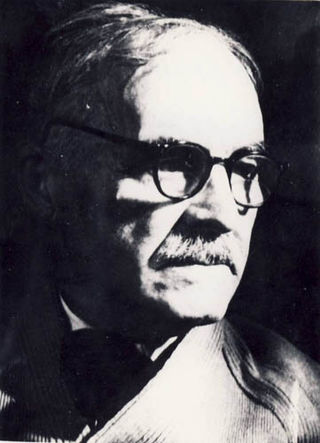
Ion Nae Theodorescu was a Romanian writer who wrote under the pen name Tudor Arghezi (Romanian pronunciation:[ˈtudorarˈɡezi]. He is best known for his unique contribution to poetry and children's literature.

Ion Luca Caragiale, commonly referred to as I. L. Caragiale, was a Romanian playwright, short story writer, poet, theater manager, political commentator and journalist. Leaving behind an important cultural legacy, he is considered one of the greatest playwrights in Romanian language and literature, as well as one of its most important writers and a leading representative of local humour. Alongside Mihai Eminescu, Ioan Slavici and Ion Creangă, he is seen as one of the main representatives of Junimea, an influential literary society with which he nonetheless parted during the second half of his life. His work, spanning four decades, covers the ground between Neoclassicism, Realism, and Naturalism, building on an original synthesis of foreign and local influences.

Alexandru Macedonski was a Romanian poet, novelist, dramatist and literary critic, known especially for having promoted French Symbolism in his native country, and for leading the Romanian Symbolist movement during its early decades. A forerunner of local modernist literature, he is the first local author to have used free verse, and claimed by some to have been the first in modern European literature. Within the framework of Romanian literature, Macedonski is seen by critics as second only to national poet Mihai Eminescu; as leader of a cosmopolitan and aestheticist trend formed around his Literatorul journal, he was diametrically opposed to the inward-looking traditionalism of Eminescu and his school.
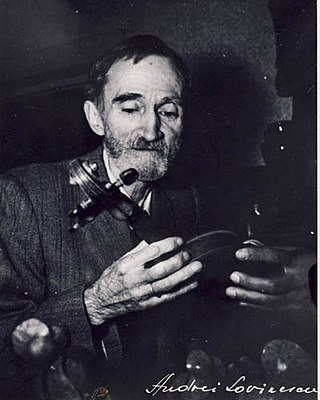
George Bacovia was a Romanian symbolist poet. While he initially belonged to the local Symbolist movement, launched as a poet by Alexandru Macedonski with the poem and poetry collection Plumb ("Lead"), his poetry came to be seen as a precursor of Romanian Modernism and eventually established him in critical esteem alongside Lucian Blaga, Tudor Arghezi, Ion Pillat, Ion Barbu, and Octavian Goga as one of the most important interwar Romanian poets. In the 1950s, he wrote the poem "Cogito", which is his poetical testament.

Constantin Rădulescu-Motru was a Romanian philosopher, psychologist, sociologist, logician, academic, dramatist, as well as left-nationalist politician. A member of the Romanian Academy after 1923, he was its vice president in 1935–1938, 1941–1944, and its president between 1938 and 1941.

Ion Minulescu was a Romanian avant-garde poet, novelist, short story writer, journalist, literary critic, and playwright. Often publishing his works under the pseudonyms I. M. Nirvan and Koh-i-Noor, he journeyed to Paris, where he was heavily influenced by the growing Symbolist movement and Parisian Bohemianism. A herald of Romania's own Symbolist movement, he had a major influence on local modernist literature, and was among the first local poets to use free verse.
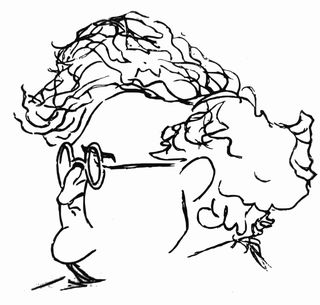
Perpessicius was a Romanian literary historian and critic, poet, essayist and fiction writer. One of the prominent literary chroniclers of the Romanian interwar period, he stood apart in his generation for having thrown his support behind the modernist and avant-garde currents of Romanian literature. As a theorist, Perpessicius merged the tenets of Symbolism with the pragmatic conservative principles of the 19th century Junimea society, but was much-criticized over perceptions that, in the name of aesthetic relativism, he tolerated literary failure. Also known as an anthologist, biographer, museologist, folklorist and book publisher, he was, together with George Călinescu, one of his generation's best-known researchers to have focused on the work of Junimist author and since-acknowledged national poet Mihai Eminescu. Much of Perpessicius' career was dedicated to collecting, structuring and interpreting Eminescu's texts, resulting in an authoritative edition of Eminescu's writings, the 17-volume Opere ("Works").
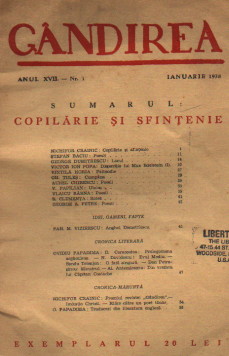
Gândirea, known during its early years as Gândirea Literară - Artistică - Socială, was a Romanian literary, political and art magazine.

Ovidiu Papadima was a Romanian literary critic, folklorist, and essayist.
Ion Sân-Giorgiu was a Romanian modernist poet, dramatist, essayist, literary and art critic, also known as a journalist, academic, and fascist politician. He was notably the author of works on the Sturm und Drang phenomenon and the influence of Johann Wolfgang von Goethe. During his early years, he was influenced by Expressionism and contributed to the literary magazine Gândirea; he progressively moved towards support for the Iron Guard, edited the far right journal Chemarea Vremii, and spent his last years as a member of Horia Sima's government in exile.

Pantazi Ghica was a Wallachian, later Romanian politician and lawyer, also known as a dramatist, poet, short story writer, and literary critic. A prominent representative of the liberal current, he was the younger brother and lifelong collaborator of Ion Ghica, who served as Prime Minister of the Romanian Kingdom in 1866-1867 and again in 1870-1871. Pantazi Ghica began his political career as a participant in the Wallachian Revolution of 1848, a collaborator of the Romantic historian and activist Nicolae Bălcescu, and a member of the radical grouping headed by C. A. Rosetti. Although twice involved in the administration of Buzău County, Ghica lived much of his life in exile or in Bucharest, and was also a soldier for the Ottoman Empire during the Crimean War. After 1875, he was a prominent member of the National Liberal Party.

Nicolae Petrovici, known as Nicolae Petrașcu and commonly rendered as N. Petrașcu or Pĕtrașcu, was a Romanian journalist, essayist, literary critic, novelist, and memoirist. The author of monographs on major figures in Romanian literature, Petrașcu was originally affiliated with the conservative literary society Junimea, but did not embrace all its tenets. Like his friend, novelist Duiliu Zamfirescu, he parted with the group and, together with Dimitrie C. Ollănescu-Ascanio, established a new circle around the magazine Literatură și Artă Română.
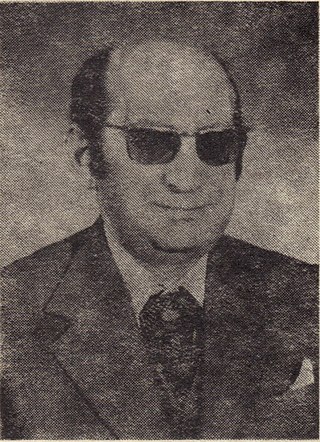
Zigu Ornea was a Romanian cultural historian, literary critic, biographer and book publisher. The author of several monographs focusing on the evolution of Romanian culture in general and Romanian literature in particular, he chronicled the debates and meeting points between conservatism, nationalism, and socialism. His main early works are primarily dedicated to the 19th and early 20th century cultural and political currents heralded by Junimea, by the left-wing ideologues of Poporanism and by the Sămănătorul circle, followed independently or in relation to one another. Written as expansions of this study were Ornea's biographical essays on some of the period's leading theorists: Titu Maiorescu, Constantin Dobrogeanu-Gherea and Constantin Stere.
I. Dragoslav or Ion Dragoslav, pen names of Ion V. Ivaciuc or Ion Sumanariu Ivanciuc, was a Romanian writer. His presence on the local literary scene meant successive affiliations with various competing venues: having debuted with the traditionalist and nationalist magazine Sămănătorul, he later connected the eclectically conservative Convorbiri Critice group of Mihail Dragomirescu with the Romanian Symbolist movement leaders Alexandru Macedonski and Ion Minulescu, before moving close to the modernist trend of Eugen Lovinescu and his Sburătorul.
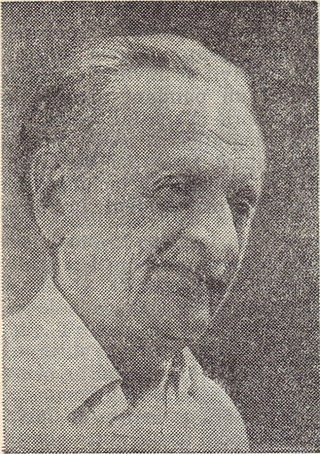
Șerban Cioculescu was a Romanian literary critic, literary historian and columnist who was born in Drobeta-Turnu Severin and died in Bucharest. He held teaching positions in Romanian literature at the University of Iași and the University of Bucharest, as well as membership of the Romanian Academy and chairmanship of its Library. Often described as one of the most representative Romanian critics of the interwar period, he took part in the cultural debates of the age, and, as a left-wing sympathizer who supported secularism, was involved in extended polemics with the traditionalist, far right and nationalist press venues. From early on in his career, Cioculescu was also noted for his selective approach to literary modernism and the avant-garde, preferring to place his cultural references with Neoclassicism.

Sămănătorul or Semănătorul was a literary and political magazine published in Romania between 1901 and 1910. Founded by poets Alexandru Vlahuță and George Coșbuc, it is primarily remembered as a tribune for early 20th century traditionalism, neoromanticism and ethnic nationalism. The magazine's ideology, commonly known as Sămănătorism or Semănătorism, was articulated after 1905, when historian and literary theorist Nicolae Iorga became editor in chief. While its populism, critique of capitalism and emphasis on peasant society separated it from other conservative groups, Sămănătorul shared views with its main conservative predecessor, the Junimea society, particularly in expressing reserve toward Westernization. In parallel, its right-wing agenda made it stand in contrast to the Poporanists, a Romanian populist faction whose socialist-inspired ideology also opposed rapid urbanization, but there was a significant overlap in membership between the two groups. Sămănătorul's relationship with the dominant National Liberal Party was equally ambiguous, ranging from an alliance between Sămănătorul and National Liberal politician Spiru Haret to Iorga's explicit condemnation of 20th century Romanian liberalism.

The Symbolist movement in Romania, active during the late 19th and early 20th centuries, marked the development of Romanian culture in both literature and visual arts. Bringing the assimilation of France's Symbolism, Decadence and Parnassianism, it promoted a distinctly urban culture, characterized by cosmopolitanism, Francophilia and endorsement of Westernization, and was generally opposed to either rural themes or patriotic displays in art. Like its Western European counterparts, the movement stood for idealism, sentimentalism or exoticism, alongside a noted interest in spirituality and esotericism, covering on its own the ground between local Romanticism and the emerging modernism of the fin de siècle. Despite such unifying traits, Romanian Symbolism was an eclectic, factionalized and often self-contradictory current.

Ion Theodorescu-Sion was a Romanian painter and draftsman, known for his contributions to modern art and especially for his traditionalist, primitivist, handicraft-inspired and Christian painting. Trained in academic art, initially an Impressionist, he dabbled in various modern styles in the years before World War I. Theodorescu-Sion's palette was interchangeably post-Impressionist, Divisionist, Realist, Symbolist, Synthetist, Fauve or Cubist, but his creation had one major ideological focus: depicting peasant life in its natural setting. In time, Sion contributed to the generational goal of creating a specifically Romanian modern art, located at the intersection of folk tradition, primitivist tendencies borrowed from the West, and 20th-century agrarian politics.
I. M. Rașcu was a Romanian poet of Symbolist verse, cultural promoter, comparatist, and schoolteacher. He is remembered for his participation in the Romanian Symbolist movement: a founder and co-editor, with Alfred Hefter-Hidalgo, of Versuri și Proză magazine, he became one of the leading Symbolist figures in his native city of Iași before 1914. In later years, he lived more discreetly as a scholar and educationist, earning both praise and opprobrium for his sternness and erudition.
Petre Paul Negulescu was a Romanian philosopher and conservative politician, known as a disciple and continuator of Titu Maiorescu. Affiliated with Maiorescu's Junimea society from his early twenties, he debuted as a positivist and monist, attempting to reconcile art for art's sake with an evolutionist philosophy of culture. He was a lecturer and tenured professor at the University of Iași, where he promoted the Junimist lobby against left-wing competitors, and formalized his links with the Conservative Party in 1901. From 1910, he taught at the University of Bucharest, publishing works on Renaissance philosophy and other historical retrospectives.















